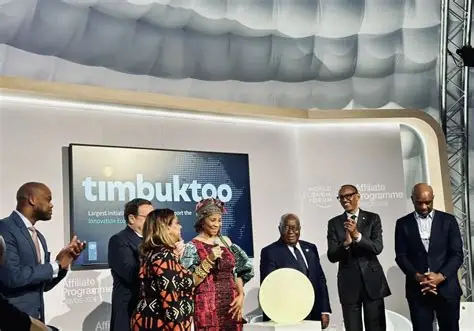
For over a decade, the “Big Four” — Nigeria, Kenya, Egypt, and South Africa — have stood as the uncontested powerhouses of African innovation. These countries attracted nearly 75% of the continent’s venture funding, hosted its biggest accelerators, and shaped investor confidence across borders.
But the new Timbuktoo Africa startup fund, launched by the United Nations Development Programme (UNDP) and its partners, might quietly be rewriting that map — and not entirely for the better.
At the 10th AfriLabs Annual Gathering, experts debated how Africa could finance innovation “at speed, scale, and sustainability.” Moderated by Sinazo Sibisi, Chief Investment Officer at Timbuktoo, the panel introduced the initiative as a bold, $1 billion commitment to nurturing 1,000 startups across Africa.
Its model looks progressive on the surface — distributing funding hubs across key innovation sectors:
But beneath the optimism lies an uncomfortable reality: the Big Four may be on the brink of losing their long-standing dominance — not to stronger competition, but to a forced rebalancing that could scatter capital and dilute investor confidence.
While Timbuktoo’s $1 billion ambition sounds like a long-overdue democratization of Africa’s tech landscape, the redistribution of resources risks weakening existing ecosystems that have taken years to mature.
The Big Four — particularly Nigeria and Kenya — have cultivated robust networks of incubators, venture capitalists, and accelerators. Their ecosystems thrive on density: investors meet founders, ideas evolve quickly, and exits (though rare) remain visible.
Spreading that capital too thinly across smaller economies might lead to what economists call “ecosystem dilution” — where promising startups receive symbolic, short-term support but lack the infrastructure and scale to survive beyond early-stage funding.
As Clara Mwangola of Kuramo Capital Management noted during the discussion, the challenge is not just in funding but in building sustainable systems. Yet, in attempting to fix regional inequality, Timbuktoo may inadvertently slow down Africa’s strongest growth engines — the very markets that put the continent’s tech scene on the global radar.
According to Sibisi, the goal is to “build a strong crop of gazelles that would take Africa to the world.”
But the reality is far more complicated. Africa doesn’t just need more startups — it needs sustainable ecosystems, regulatory stability, and investor trust.
Without addressing these fundamentals, $1 billion spread across 1,000 ventures could result in a wave of underfunded startups that fail to scale, echoing the fate of many accelerator-backed ventures that faded after their seed rounds.
For the Big Four, the challenge is not whether Timbuktoo succeeds — but whether it succeeds at their expense.
If investor attention drifts away, venture capital pipelines could dry up, accelerators may lose sponsors, and existing startups could face new competition for already limited technical talent.
While inclusivity is commendable, redistribution without reinforcement risks collapsing the very structures that made African innovation visible in the first place.
Africa’s tech ecosystem stands at a crossroads.
Timbuktoo represents both promise and peril — a bold reimagining of where innovation should happen, but also a potential destabilizer for the continent’s core markets.
To avoid this imbalance, policymakers and investors must ensure that democratizing innovation does not come at the cost of weakening Africa’s proven hubs.
Because in trying to make every nation a tech powerhouse, we might end up with none.